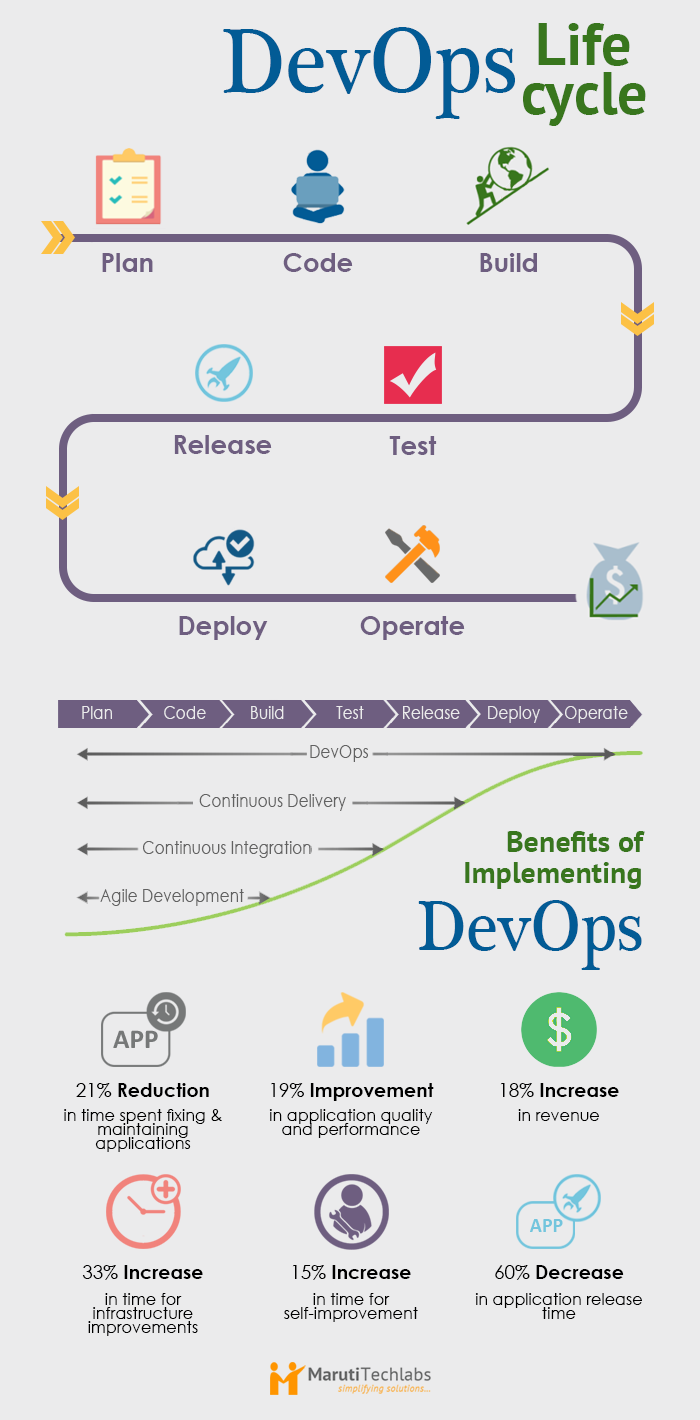

DevOps – Achieving Success Through Organizational Change






Imagine a place divided between innovation and execution. On one side people are talking about innovation and creating something new, whereas on the other side we have people bent on safety and deployment. This is often the case in most of the software companies where teams are divided into ‘development’ and ‘operations’. Developers are often criticized for delaying the project in the wake of innovation and not providing substantial business value. Operations people emphasize on a timely delivery of product disparaging innovation. So they have different agendas and may have different time frames too. Thus mismatched priorities, vision and time frame causes a lot of friction between the teams. This eventually leads to loss of productivity and precious time. Incorporating DevOps methodology we can bridge the gap between the two teams – Development and IT operation.
DevOps refers to the emerging professional movement that advocates a collaborative working relationship between Development and IT Operations, resulting in a fast flow of planned work. It increases reliability, stability and resilience of the production environment. DevOps is particularly important for companies which have frequent releases. Frequent releases let the application development teams obtain user feedback more quickly. This is referred to as continuous deployment or delivery. Leading businesses such as Amazon, Facebook, Netflix, Twitter, and Google are using DevOps to achieve a high level of performance. For example, when Facebook introduced Timeline feature, the developers would write software in small chunks which would be integrated, tested, monitored and deployed in hours. This approach, facilitated by DevOps as a service (DaaS), allowed Facebook to iterate and release the Timeline feature rapidly, ensuring a smooth user experience. The goal of DevOps is to increase business value by making it agile through continuous delivery of products and services that satisfy customer needs.

Incorporating continuous delivery technique leads to higher deployment rates. Continuous deployment upgrades the development environment with tools and knowledge for an efficient functioning of processes. Forming a DevOps team is very beneficial for the development team. Developers get hands on experience of operations increasing their technical competency and feel motivated to work for newer improved version. With frequent deployments and feedbacks, developers are able to produce user-focussed products. Similarly, operation experts can understand the nuances of developing the products.
As each release in continuous deployment (DevOps) is a smaller update, the final product has less major defects (bugs). DevOps is built on top of the agile programming methodology. It includes several agile principles such as collaboration, iterative development, and modular programming, breaking larger codes into smaller manageable features. This makes it easier to detect code defects and increases the stability of the platform.
Businesses can quickly achieve minimum viable product (MVP) using DevOps technique. With continuous integration, faster deployment and iterative feedbacks MVP can be delivered to the customers in less time and exposing the product to end users. Thus, businesses can get immediate feedback to improve and work upon the features in the next iteration. This is a powerful competitive advantage for any company reliant on winning market share and demonstrating to customers that they are on top of their game and intent on providing real value fast. This also opens up more revenue streams for a business, and with that you can plan better for the future.
Typically in an IT setup there are a lot of repetitive tasks and dependency on other teams leading to underutilization of time and money. DevOps reduces these issues through a combination of new tools and effective practices. This enables people to be productive at work and deliver higher quality and value-add output. DevOps practices allow you to automate deployments, testing, and provisioning of services. This removes a lot of repetitive tasks from your daily routine and lets people focus on innovation. So DevOps also benefits individuals and puts greater value into your skill sets.
DevOps takes two disciplines, development, and operations, which were traditionally different silos into one discipline. This inculcates a culture that is characterized by increased communication and collaboration. By fostering a culture of trust between team members and due to sharing of risks, they are encouraged to experiment and continuously improve the company’s products and services. Thus making it possible for them to research newer customer needs and innovate accordingly.
DevOps is a relatively newer concept and can be viewed as a natural extension of Agile methodologies. DevOps is, in fact, a step further to continuous delivery and includes the whole software development lifecycle i.e. plan, code, build, test, release, deploy, and operate. It can prevent critical issues by making enterprise IT more fluid and agile. In any industry, change in working culture is going to cause a stir. However, the businesses who want to progress with technology a new collaborative and communicative effort is surely the best way to move forward. Therefore, it is likely that DevOps is here for the long term, built on mutual respect, trust, and communication.


